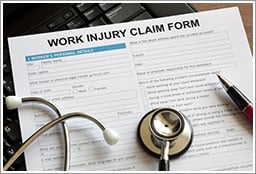Have you ever been in a car accident? Did you feel prepared for what steps to take? Was there anything you forgot to do?
As a CSA in our Personal Lines Department here at R&R, I frequently assist clients after they’ve been in a car accident. Unfortunately, I was recently in one myself and learned what it’s like to be on the other side of the phone. Being the client was a great reminder about what steps someone should take immediately following their accident. I encourage you to keep these tips in mind, and never hesitate to contact your knowledge broker for more information.
- Safety First! Make sure yourself or the other party is not seriously injured. Call for medical assistance, if needed. If cars can be moved out of the road to a shoulder or side street, try and do so to avoid another potential accident. If they cannot be moved, stay in your vehicle with your seatbelt on. Don’t forget to put on your emergency flashers!
- Call the police. They can help get tow trucks, direct traffic out of the way, and can file the policy report right there. Having a police report on file for your insurance claim will be very helpful down the road.
- Don’t discuss fault with the other driver or a police officer. Leave it up to the officer and insurance companies to determine it. Just explain what happened so the police can document it on their reports, don’t admit fault or place blame on the other driver.
- Gather information. Take a picture of the other party’s insurance card and driver’s license if you don’t have a pen and paper available. Make sure to get their name, phone number, license plate number, insurance carrier and insurance policy number. If possible, take some pictures of the damage done on both vehicles.
- Witnesses. If there are any witnesses at the scene who have stopped to help, get their information as well. It may be important in helping determine who is at fault later on.
- Call your insurance agent. It may take around 10 minutes to get the claim started, so make sure you’re in a safe place and out of traffic to do this. If you are in need of a tow truck or a rental car, they can help you out with that as well.
- Seek Medical Attention. It may take some time before you realize that you've been injured. Once the shock of being in an accident wears off, you might realize you’re swollen or sore in places. It doesn’t hurt to get checked out by a doctor. Make sure that your doctors document everything, in case your pain gets worse later on.
Contact a knowledge broker for more information on car accident safety.




 The causes of absenteeism are varied, and so is the impact on companies - from decreased productivity to a reduction in profit and morale.
The causes of absenteeism are varied, and so is the impact on companies - from decreased productivity to a reduction in profit and morale.